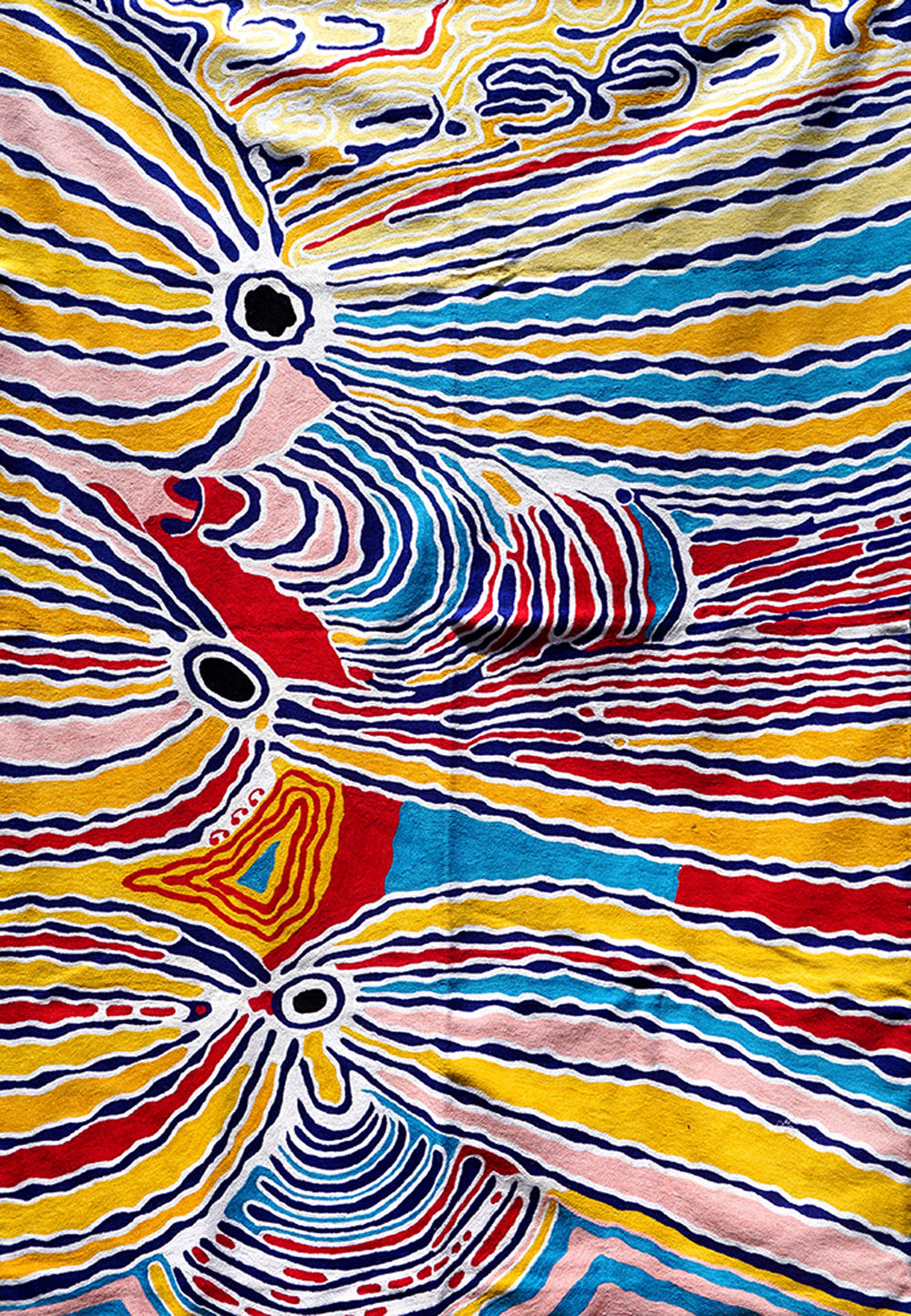Description
Composition: Hand dyed wool and cotton
Size: 122 x 183 cm (48 x 72 inches)
Features:
- Hand embroidered/chain-stitched
- All natural fibres – embroidered wool on cotton canvas
- Fair Trade certified
- Limited edition – individually numbered
- Certificate of Authenticity supplied with each kilim
- Royalties paid to the artist/family on every sale
- Hard wearing
- Back has non-slip surface
- Each kilim has flap on the rear for ease of hanging with dowel/rod
- Matching cushion covers are also available
Chain-stitched kilims are a traditional rug/soft furnishings making technique from Kashmir. As people sat on the floor they were both homewares and decoration. As many artworks are painted on the ground or 3D surfaces/bodies most of the images do not have a set orientation so can also be hung portrait or landscape if preferred.
Artist: Liddy Napanangka Walker
About the design: Wakirlpirri Jukurrpa (Dogwood Dreaming)
The image expresses the hanging seedpods of the Wakirlpirri tree.
” I paint my father Japangardi’s Dreaming and my grandfather’s Dreaming. Mt Theo is my father’s country and that’s what I’m painting the special Dreamings from. The Dreamings I paint are bush tomato, goanna….Goanna likes to fight and is a lover boy. And I paint seed pods and bush potato and hopping mouse. There are lots of stories… I paint strongly.”
Liddy was born in 1925 at Mt Doreen, and spent her younger years living with her family in bush camps. She regularly visited her country around Mt Theo, west of Yuendumu. She lived in Yuendumu, a remote Aboriginal community located 290 kms north-west of Alice Springs, in the NT of Australia, since it was first established and worked in the community in various pastoral care roles including cooking for the sick or the elderly. She started painting on canvas not long after Warlukurlangu Artists Aboriginal Corporation, an Aboriginal owned and governed art centre located in Yuendumu, was established in 1985 and Liddy became one of the most important members. Liddy painted her father’s Jukurrpa stories, Dreaming stories which relate directly to her land, its features and animals. These stories were passed down to her by her father and her grandfather and their parents before them for millennia.
CARE INSTRUCTIONS:
Do not put place/use in direct sunlight or colors may fade. To clean – dry cleaning recommended. Can be ironed on a wool steam setting.
Can be ironed (on the woollen side of the rug) on a wool steam setting. For a big rug it’s easiest done on the floor.
About the Better World Arts chainstitch kilim products
These beautiful, unique textiles are a cross-cultural collaboration combining Aboriginal designs and traditional Kashmiri rug-making techniques. Chain stitched, using hand dyed wool, each is a completely handmade piece. A more empowering way to work, this brings many direct benefits to the artists’ and their community. Control and ownership of intellectual property are also maintained. Purchase of these products guarantees a direct return to the Aboriginal artist and their community.
Warlukurlangu Artists: was founded in 1985 in Yuendumu, 300 km north-west of Alice Springs in the Tanami Desert. It is home to Warlpiri people. The founder of Songlines was the first manager of Warlukurlangu Artists from 1986-88 and has a deep love for Warlpiri people and their communities – and their art (of course).










